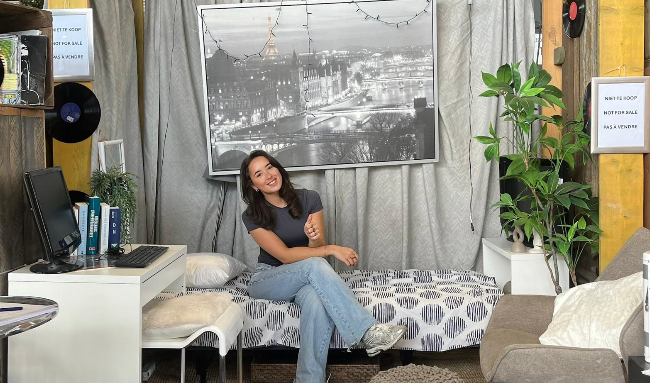The circular economy is no longer an abstract ideal for the future, but an urgent social and economic task today. It is the key to dealing smarter with raw materials, reducing waste and making companies future-proof. For a region like South Limburg, with its strong manufacturing industry, logistics and knowledge infrastructure, the circular transition offers not only ecological gains, but also economic opportunities and social added value.
But this transition does not happen by itself. It requires creativity, guts and new skills - and especially people who step in now. Students, entrepreneurs and citizens play a crucial role in this. Because no matter how great the technological innovations, the real change starts with the choices we make every day. Young people are particularly important in this: they determine tomorrow's market with their (purchasing) behavior. It is precisely for this reason that Sabine Reubsaet, Zuyd University alumnae, investigated how young people can be better motivated to make circular choices - and thus contribute to a sustainable future.
This is the first story in a series on circular economy in (South) Limburg.
.
How to entice young people to make circular choices?
How can retailers encourage young people to make more circular choices when buying furniture. That's what Sabine Reubsaet, who recently graduated from Zuyd University's Commercial Economics program, researched. "For me, economics is not just about selling more, but rather about being smart with what is already there," she said. "In the furniture sector there is still a lot of profit to be made, because every year many millions of kilos of discarded items end up in landfills."
Sabine conducted her hands-on research in collaboration with Zuyd University of Applied Sciences' Special Lectorate for Creative and Circular Entrepreneurship and Keyport. Interviews with experts, retailers and young people revealed that there is quite a willingness to consume more sustainably, but that unfamiliarity, the image of second-hand products and unattractive presentation are barriers.
Promote circular as hip and unique
Those barriers Sabine wanted to remove. "I wanted young people to experience that circular does not have to be boring or old-fashioned, but rather hip, affordable and unique." Kringloop-Zuid in Maastricht was willing to cooperate. Sabine built a showroom there with furnished student rooms full of second-hand furniture. Through a video on social media (TikTok and LinkedIn) and offline (posters), the showroom was promoted. Sabine: "The reactions were positive. Young people indicated that the furniture was surprisingly stylish and usable. They were impressed by the price advantage and indicated that would be a reason to buy second-hand. Some had never been to a thrift store before and found the other offerings cluttered. More overview and styling would be more inviting." Yorick Wolswijk, manager at the thrift store, was pleasantly surprised by the many positive reactions from customers. "Someone even wanted to buy up the entire showroom. We are now planning to repeat the showroom with student rooms around the Inkom next year, when many new students come to live in the city. By the way, we already regularly see students in our store. To our surprise, most of them are international, especially German, students."
Communication and presentation
In addition, Sabine set up a pop-up recycling booth at Zuyd University of Applied Sciences. "That provided an approachable introduction to circular products, especially among young people who would not normally go to a thrift store. The pop-up led to fun conversations about sustainability and recycling, and quite a few items were sold." A furniture pimping workshop also generated positive responses. "That shows how important communication and presentation are," Sabine explains. "If you present circular products attractively and actively inform young people, you lower the threshold enormously. Combine that with a trendy shopping experience or a clever loyalty campaign, and you make circular buying much more natural." Yorick recognizes that: "Buying second-hand has long since ceased to be a taboo and even adds something extra for many. Online promotion is also incredibly important in attracting young people to the store."
Challenges and opportunities for retailers
.In her research, Sabine also included bol.com and Het Goed as example retailers. "During the National Hackathon 2025, these organizations brought in the issue, 'what to do with return products,'" she said. "Return products are unfortunately often destroyed," Sabine said. "Last year, bol.com and Het Goed started a collaboration. Return products in good condition go to Het Goed for second-hand sales. Research shows that young people know little about return flows and actually never link bol.com to circular." In summary, Sabine concludes that young people are quite willing to make circular choices but that awareness and knowledge still leave much to be desired. Here lies a challenge and an opportunity for retailers to improve the image of second-hand products and make the opportunities for circular purchases more visible.
Source: ESZL.nl
.